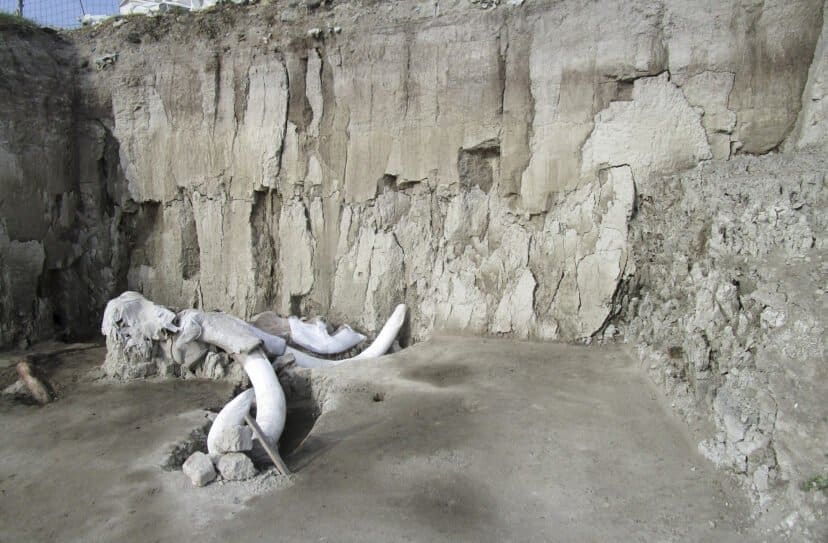At least 14 woolly mammoth skeletons have been discovered in Mexico, in man-made traps estimated to be some 15,000 years old.
Both pits, uncovered in Tultepec, just north of Mexico City, are the first ever mammoth traps to be discovered.
It’s believed that hunters would scare the giant elephant-like creatures into the traps, using torches and branches.

Over 800 separate bones have so far been uncovered and could lead to a change in what is understood about how early humans managed to successfully hunt such large animals, BBC News reports.
According to Mexico’s National Institute of Anthropology and History (INAH), more traps could soon be discovered in the area.
Archaeologists have always believed that humans were only able to kill mammoths if they were already trapped or hurt. However, this new discovery of these human built traps could prove these hunts were in fact planned.
Diego Prieto Hernández, director of the institute, said the discovery ‘represents a watershed, a turning point in what we until now imagined to be the interaction between hunter-gatherers with these huge herbivores.’
Each pit is around 1.7 metres deep and 25 metres in diameter.
The last of the woolly mammoths are believed to have died of thirst on a remote island off the coast of Alaska around 5,600 years ago. However, the majority of the world’s mammoth population is believed to have died out more than 10,500 years ago.
Hunting and environmental changes were chalked as the main causes behind their extinction – an idea which these traps support.
According to a study in the Proceedings of the National Academy of Sciences, the last group living in Alaska, faced very different problems. As the Earth warmed up after the Ice Age, sea levels rose and caused the island they called home to shrink in size. As a result, some of its lakes were lost to the ocean and salt water flowed into remaining reservoirs, diminishing access to freshwater.

Lead author Prof Russell Graham, from Pennsylvania State University, penned in the study:
As the other lakes dried up, the animals congregated around the water holes.
They were milling around, which would destroy the vegetation – we see this with modern elephants.
And this allows for the erosion of sediments to go into the lake, which is creating less and less fresh water.
The mammoths were contributing to their own demise
These traps are just the beginning in learning about how our predecessors hunted the giant creatures.
SOURCE: UNILAD
